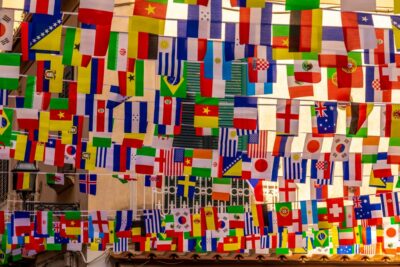Drought weighs on post-pandemic recovery in Latin America
The increasingly frequent and intense droughts are having more and more a negative impact on the economy. Agriculture, mining, energy and transport are affected.
by Alexander Busch, Latin America correspondent for Handelsblatt and Neue Zürcher Zeitung
In the centre of South America, the lack of rainfall continues in a fatal chain reaction on the economies. The drought in the southern Amazon and in the Pantanal region is the worst in the last 50 years. But the lower rainfall in central Brazil every year is not only a burden on the farmers in Mato Grosso. Because the Paraná River is carrying less water than it has for a long time, the dams in the southeast of the country have run dry. If it doesn’t start raining in the next few weeks, power rationing could be necessary by the end of the year – as it was last 20 years ago. The Amazon is suffering from the worst drought in almost a century.
In Argentina and Paraguay, too, a lack of rainfall is putting a strain on agriculture. As recently as 2018, farmers in the Pampas suffered the worst drought in 50 years. But now rivers are increasingly failing as transport routes. Argentina exports 80% of its grain from inland ports around Rosário to the Atlantic. In Paraguay, it is 95% of all exports. At present, however, the ships can load less and less, and the farmers have to switch to trucks, which bring the harvest to the ports on the Atlantic. The consequences are rising food prices.
Drought is also on the increase in the Andes: there has been too little rainfall for years, so that the fruit-growing regions of Mendoza in Argentina and Valparaíso in Chile will experience heavy losses this year. In Chile, a water emergency has been declared in four of 16 regions. Cities and farmers are becoming more dependent on glacial water. But the ice fields are also shrinking.
In Mexico, 70% of the country is experiencing drought, and 25% of the country is even affected by extreme drought. Here, too, it is the farmers in the north and west who are first to complain about crop losses. The country increasingly has to import maize.
According to a study by the World Bank, Chile’s and Argentina’s gross domestic product could fall by around one percentage point each this year due to the drought alone. For Brazil, investment banks have just lowered growth forecasts for 2022 to below one percent – but the drought is only one reason for the economic stagnation. If an energy crisis with electricity rationing does indeed occur – which is not yet certain – Brazil’s gross domestic product (GDP) could even shrink next year.
It is therefore surprising that climate change and its consequences for the economy and society have so far tended to be marginal issues on Latin America’s political agenda. However, this is likely to change quickly.
COVID-19 in Latin America
Development of case numbers in the region
Currently reported cases in the countries
COVID-19 vaccine doses administered
Share of people vaccinated by country








